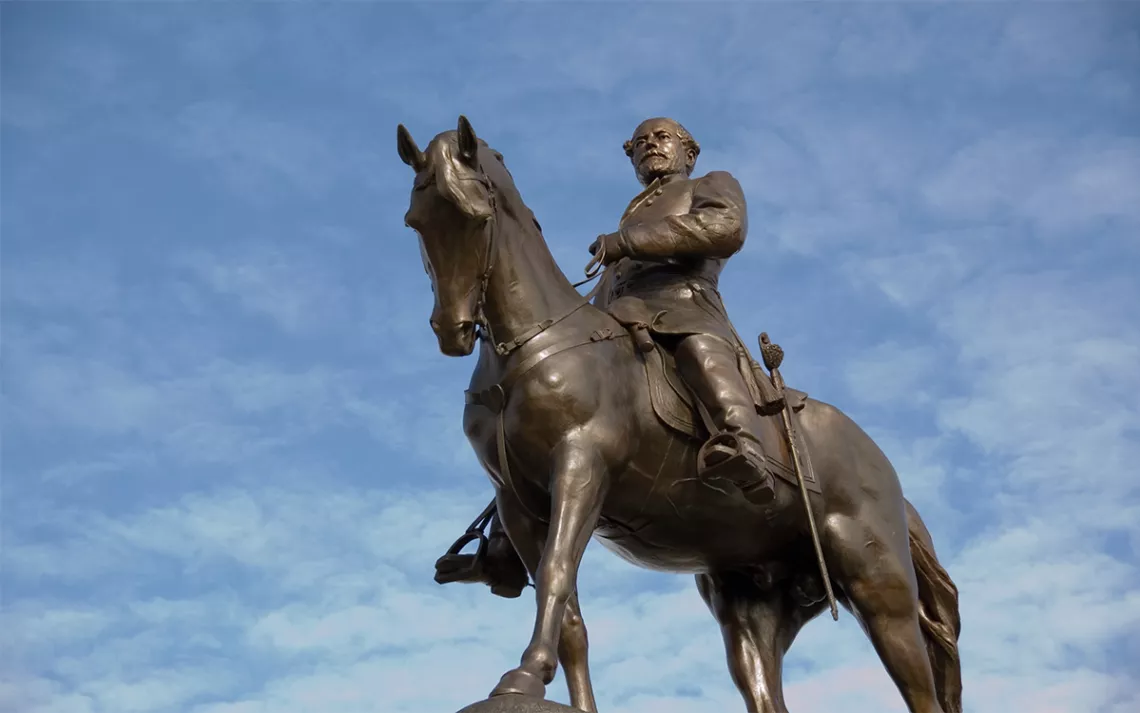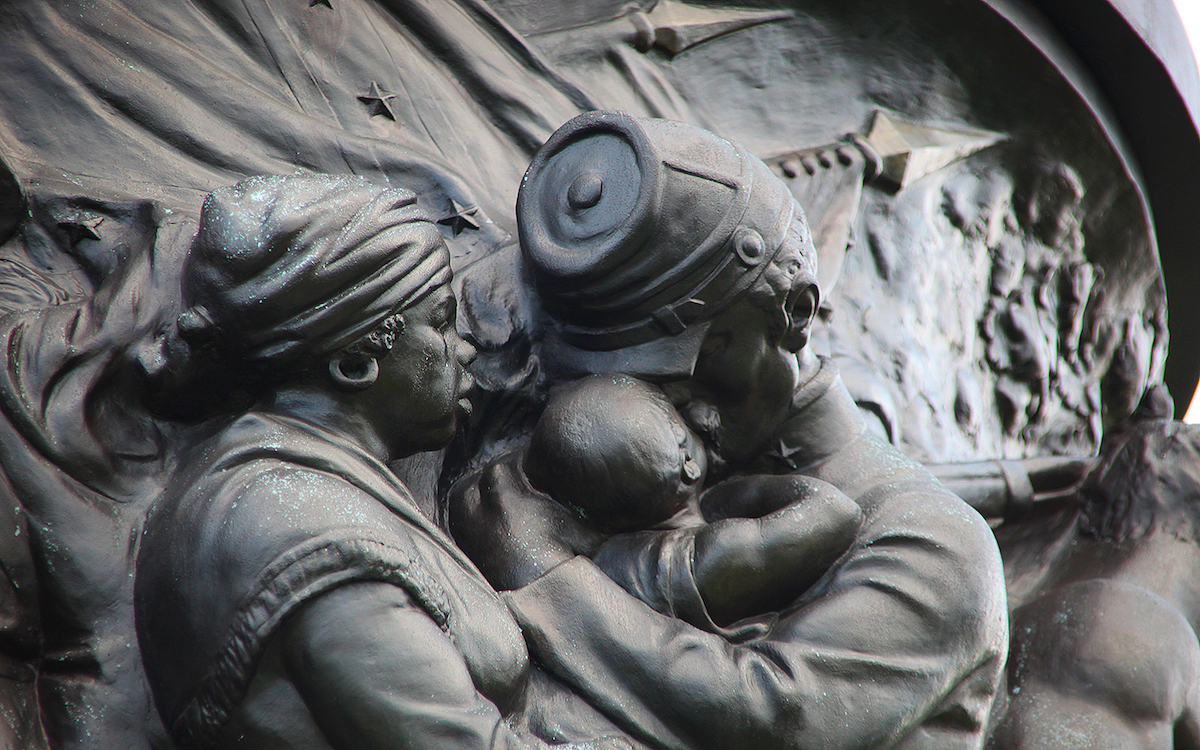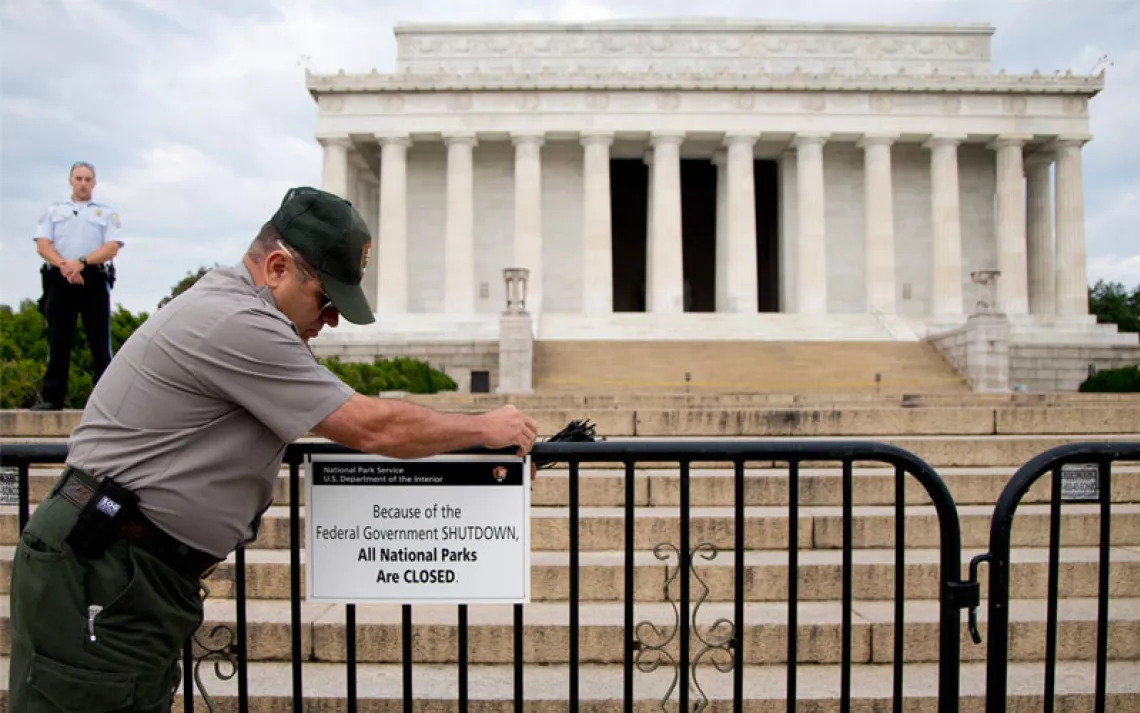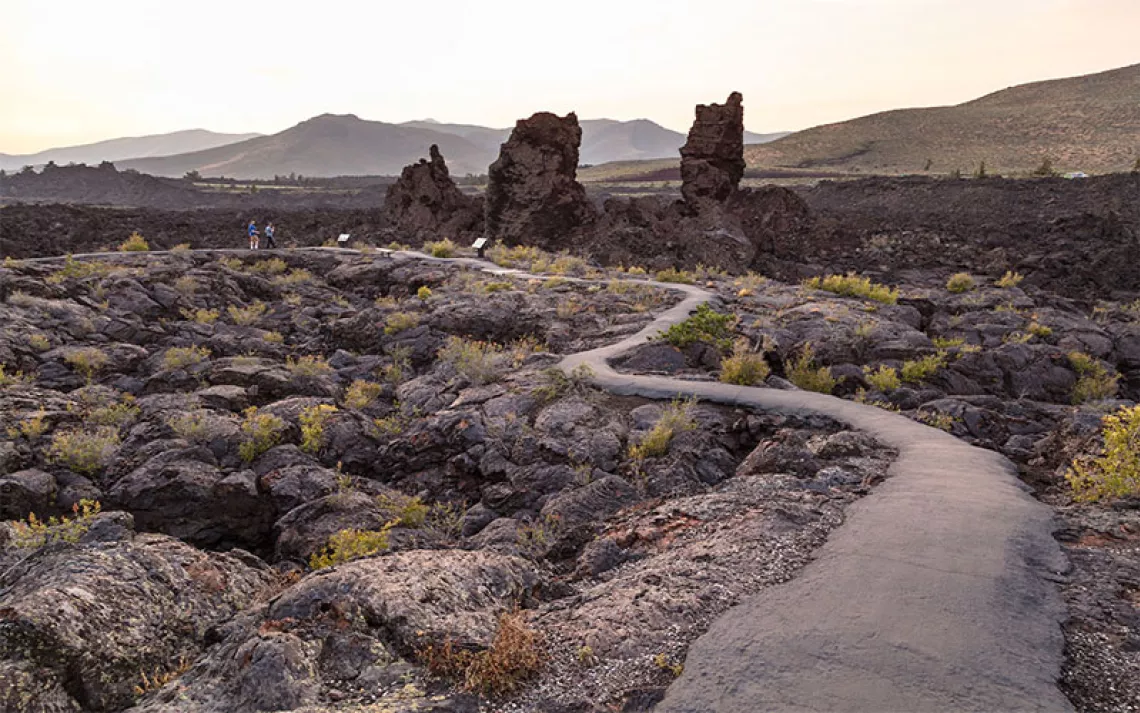Do Confederate Monuments Belong in National Parks?
Removing statues of secessionist heroes may not be so easy

Photo by DoxaDigital/iStock
Harpers Ferry, West Virginia, is a name synonymous with emancipation. In 1859, at the confluence of the Shenandoah and Potomac Rivers, abolitionist John Brown led a slave revolt to take control of an arsenal, beginning a larger battle to free the country’s roughly 3.9 million slaves. Though Brown’s plot failed, his action was a key catalyst—a “blow that woke a guilty nation,” as historian and civil rights activist W.E.B. Du Bois put it—in the push to abolish slavery, which culminated on January 1, 1863, with Abraham Lincoln’s Emancipation Proclamation.
Yet, for years, a memorial has perplexed, even enraged, visitors to this small West Virginia town. Near an obelisk commemorating Brown, there is a small plaque devoted to a black freeman named Heyward Shepherd, who was accidentally killed during the uprising. The inscription reads
To Heyward Shepherd, exemplifying the character and faithfulness of thousands of negroes who under many temptations throughout subsequent years of war, so conducted themselves that no stain was left upon a record which is the peculiar heritage of the American People, and an everlasting tribute to the best in both races.
Erected in the 1930s by a group called the United Daughters of the Confederacy, the Heyward Shepherd Memorial is not meant to instill awe. It’s a ham-fisted attempt to sell the idea that blacks had a pretty good deal in the pre–Civil War South, and that only a select few really understood this was the case. It’s a sort of memorial so common in the South that it even has its own category—that of the "faithful slave.”
The Shepherd Memorial has stirred controversy for decades not merely for its message but because it is located on National Park Service property. In the 1970s, the plaque was removed during restoration work to surrounding historical buildings, drawing ire from pro-Confederacy groups. When it was returned in 1981, the memorial was met with outrage from civil rights organizations, including the NAACP. Fearing vandalism, the NPS covered the monument with plywood until 1995, after which it was unveiled again, this time with an interpretive plaque featuring a quote in praise of John Brown from W.E.B. Du Bois. “We believe the monument is history,” Don Campbell, then superintendent of Harpers Ferry National Historical Park told the Baltimore Sun in 1995. “It's controversial, but it's history that occurred here at Harpers Ferry. What we have there now is a wayside exhibit with information that puts the monument in the context of its time. It's factual, minimal in words, and it's accurate.”
Our national parks do not preserve only the natural landscapes but also the intricate tapestry of our national history. The Civil War makes up a large portion of that mission. The Park Service currently oversees over 70 battlefields and other historic sites associated with the Civil War. According to NPS data, there are hundreds of Confederate monuments at these sites. More than 1,300 memorials are found at Gettysburg National Battlefield alone. Among these are hundreds of memorials to the Confederate cause, many devoted to military regiments and states of the Confederacy. The park also oversees monuments of the faithful-slave ilk that promote an explicitly pro-slavery view of the Civil War. One of the largest of these is the Confederate Monument at Arlington National Cemetery, site of Robert E. Lee’s former plantation estate, which the U.S. government seized after the Civil War. Amid the classical iconography adorning the 32-foot-high bronze sculpture is an image of a slave dressed in a Confederate uniform going into battle beside his master and another of a weeping black “mammy” holding the infant of a white soldier in her arms.
Racist imagery lurks not only on the hallowed ground of the battlefield and cemetery but in the gift shop. Coffee mugs, key chains, and teddy bears emblazoned with the Confederate flag were common items at national park stores until two years ago, when they were removed after a Confederate-flag-waving white supremacist named Dylann Roof killed nine black churchgoers in Charleston, South Carolina.
As cities such as Charlottesville, Baltimore, and Richmond have wrestled with what to do with their memorials to Robert E. Lee, “Stonewall” Jackson, and other icons of the old South, the National Park Service faces a similar conundrum. Do Confederate flags and monuments have any place in our national parks?
The Trump administration has capitalized on growing conservative and white supremacist angst over the removal of Confederate monuments. “This week, it's Robert E. Lee,” Trump said in a press conference. “I noticed that Stonewall Jackson is coming down. I wonder, is it George Washington next week, and is it Thomas Jefferson the week after? You really do have to ask yourself, where does it stop?” (Trump also donated his first quarter’s salary to cover the costs of maintenance projects at Antietam National Battlefield.)
Secretary of the Interior Ryan Zinke, too, has expressed support for protecting Confederate monuments. “I'm an advocate of recognizing history as it is,” Zinke said during a July address at Antietam National Battlefield. “Don't rewrite history. Understand it for what it is and teach our kids the importance of looking at our magnificent history as a country and why we are what we are.” After the violence in Charlottesville in August, Zinke reiterated his vow to protect Confederate monuments. (Meanwhile, the Trump administration has launched an attack on the country’s national parks and monuments with an effort to pare them down in size.)
Robert K. Sutton, former chief historian of the NPS between 2007 and 2015 and superintendent of Manassas National Battlefield, said that administering these sites requires acknowledgment of a fundamental fact: “Slavery was the principal cause of the Civil War.” But facts, particularly those relating to the Civil War, can be contentious, he added. “I got clobbered for saying that publically when I was the superintendent at Manassas.”
Yet, managing a national Civil War battlefield also means humanizing the conflict, Sutton said, and disentangling the overarching narrative of the South from the individual stories of regiments and soldiers. “If you look at the secession documents of almost any Confederate state, it will [say] that we are separating from the Union in order protect the institution of slavery—period,” Sutton said. “But it’s also important to remember that most of the people fighting for the Confederacy—many of the people that these monuments commemorate—were not slaveholders or big property owners. These people would have said they are fighting for their rights.”
As to whether the monuments should be part of the educational mission of the parks, Sutton said, one must consider their context. “In my mind, monuments in Civil War battlefields are very different than monuments elsewhere,” he said, noting that memorials to officers and specific regiments are often set very near the places where they fought and died. He pointed to a monument at Gettysburg commemorating the 20th Maine Volunteers, a regiment instrumental in maintaining the strategic high ground of Little Round Top. “That particular marker is placed at the end of the line, where the 20th Maine was stationed.”
One way to view the markers, according to Sutton, is not merely as commemorations but also as signposts that help orient visitors in the physical geography of the battlefields. The Virginia Monument—which features a 41-foot-high bronze sculpture of Robert E. Lee atop his horse—serves a similar function. The statue is placed atop Seminary Ridge, overlooking the site of Pickett’s Charge, a doomed last ditch attack by Confederate forces that resulted in the deaths of over 6,500 Confederates and 1,500 Union soldiers. Though the image of a Confederate “general” on horseback carries different connotations for different people, there is no way to understand the war, militarily and politically, without considering figures such as Lee and Jackson, Sutton said.

Confederate Monument at Arlington National Cemtery in Arlington, Virginia. Photo courtesy of Tim Evanson.
But what about the Heyward Shepherd Memorial, which, at best, offers a caricature of an innocent bystander—one who just happened to be black—to support a discredited and morally repugnant institution?
“It is just not correct,” said George Rutherford, president of the Jefferson County West Virginia chapter of the NAACP, who worked for years to have the plaque removed. “It implies that Heyward Shepherd was a faithful slave. But he wasn’t even a slave; he was a freeman. It also implies that slaves were happy and faithful to the master. If that was the case, then why did Nat Turner revolt?” (Nat Turner, the historical protagonist of the 2016 film Birth of a Nation, led a slave rebellion in Virginia in the 1830s for which he was executed.)
In addition to its historical inaccuracies, Rutherford said, the memorial also bears the fingerprints of one of this country’s most vehement segregationists and opponents of civil rights: late South Carolina senator Strom Thurmond, who served between 1954 and 2003. In the late 1960s and early '70s, Rutherford worked at Harpers Ferry National Historical Park, and later for the U.S. Fish and Wildlife Service, and he had a unique glimpse into the political maneuvering that resulted in the monument being uncovered in the mid 1990s. “It’s my understanding that the Daughters of the Confederacy went to Strom Thurmond, and Thurmond more or less told the secretary of the interior that the daughters want this memorial up. And that filtered down to the National Park Service. We knew that we had no choice,” he said.
Sutton, for his part, says he does not generally support removing monuments, even ones that espouse wrongheaded or implicitly racist ideas. “The interpretive monument that is there, I think, works,” he said, referring to the NPS’s plaque with the counterpoint quote from Du Bois. “For better or worse, these things are part of our national heritage.” Sutton did say that there are cases where he believes removal is warranted, such as the dozens of monuments across the South dedicated to the so-called Wizard of the Saddle, Nathan Bedford Forrest. “He murdered hundreds of African Americans who’d surrendered at Fort Pillow. He was one of the founders of the Klan. In my mind you just don’t erect a monument to a person like that.”
Ibram X. Kendi is a professor of history and international relations at American University and the author of Stamped From the Beginning: The Definitive History of Racist Ideas in America, which won the National Book Award for nonfiction in 2016. He disagrees with the idea that racist memorials can be counteracted with antislavery memorials and interpretive plaques. “This is equivalent to the ‘both sides’ argument made by Trump that was soundly critiqued across the world,” he said. “There is only one side in the Civil War we should be honoring: the United States—and all those Americans in the North and South who defied the secessionist Confederacy.”
It’s also difficult to see how the Shepherd Memorial conforms to the Park Service’s clearly defined standards. According to the NPS’s management policies, a particular monument must “not divert attention from a park’s primary interpretive theme.” NPS policies also specify a clear path for removal of a memorial that violates those standards: “The director may order the removal or modification of commemorative works that . . . are inconsistent with the policies in this section.”
But the process can be convoluted, particularly when the monument in question predates the Park Service’s tenure at a given site. According to Jeremy Barnum, acting chief of public affairs for the NPS, some older monuments, “while lacking legislative authorization, may have existed in parks long enough to qualify as historic features. . . . Unless directed by legislation, it is the policy of the National Park Service that these works and their inscriptions will not be altered, relocated, obscured, or removed, even when they are deemed inaccurate or incompatible with prevailing present-day values.” And with the Trump administration’s clearly stated vows to protect Confederate memorials at all costs, the chances of the plaque’s removal seem slight.
Rutherford says he continues to oppose the Heyward Shepherd Memorial even though he doubts that it will ever come down. On a recent visit to Harpers Ferry, he noted that the monument continues to draw negative reactions.
“People were down there just shaking their heads,” he said.
 The Magazine of The Sierra Club
The Magazine of The Sierra Club







